The Go-To Dumpster Rental in Currie – Easy Booking & Delivery
Choose Waste Removal USA for superior dumpster rental in Currie backed by straightforward service. Our simplified booking process and dependable delivery make waste management effortless for homeowners and contractors alike. We offer various container sizes throughout the Currie area, ensuring you get precisely what your project requires without overpaying for unnecessary capacity. Reach out to our helpful team today at 910-338-0901 to discuss your specific disposal needs, or secure your dumpster within minutes using our efficient online dumpster rental quote system designed for ultimate convenience.
Choose Smart. Choose Affordable. Choose Waste Removal USA
- Our transparent pricing structure eliminates confusion with all costs clearly outlined upfront
- Consultative approach ensures you receive the optimal container size for your specific materials
- Responsive adjustment capabilities accommodate unexpected project changes without complication
- Strategic delivery coordination minimizes disruption to business operations and customer access
Hassle-Free Roll-Off Dumpster Rentals for Business Upgrades
Business transformations require reliable waste management that adapts to evolving project needs. Waste Removal USA delivers containers precisely when needed, establishing immediate debris management from your upgrade’s first day. Our experienced team recommends optimal placement locations that balance contractor access with operational continuity, creating an efficient renovation environment while maintaining professional appearances.
Dumpster Sizes
*actual dimensions may vary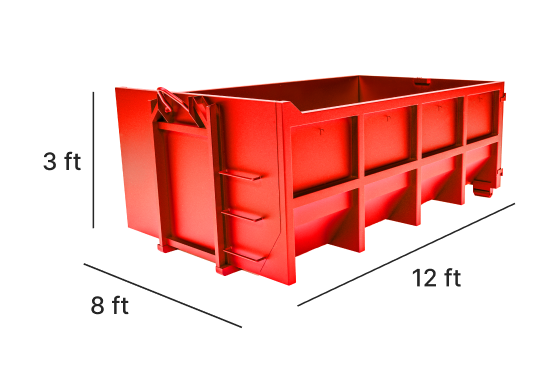
10-YARD DUMPSTER
10 yard dumpsters can hold about 3 pickup truck loads. Great for a spring cleaning like emptying your garage or basement.
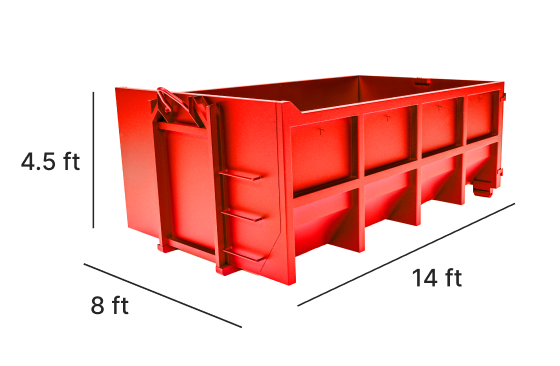
15-YARD DUMPSTER
15 yard dumpsters can hold about 4.5 pickup truck loads. Ideal for slightly larger garage or basement cleanouts.
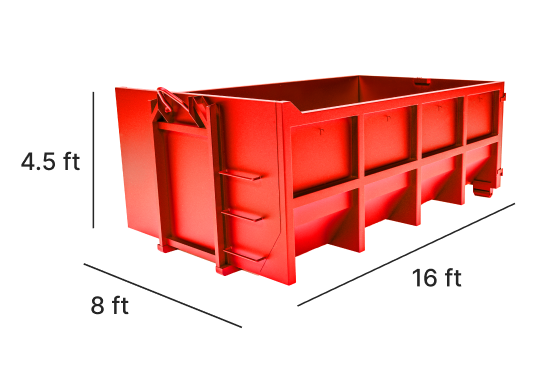
20-YARD DUMPSTER
20 yard dumpsters can hold about 6 pickup truck loads. Great for those remodeling or re-shingling a roof.

30-YARD DUMPSTER
30 yard dumpsters can hold about 9 pickup truck loads. Equipped for medium construction projects.
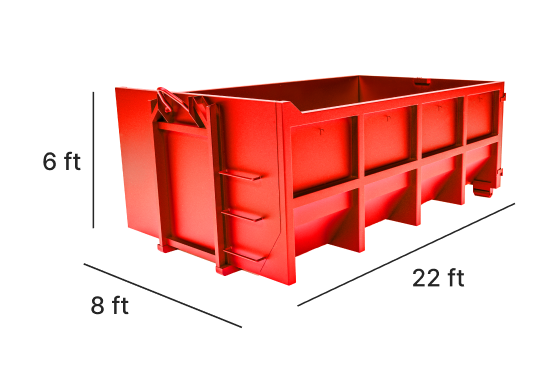
40-YARD DUMPSTER
40 yard dumpsters can hold about 12 pickup truck loads. The largest dumpster great for larger construction projects.
Quick & Reliable Dumpster Rentals for Currie Job Sites
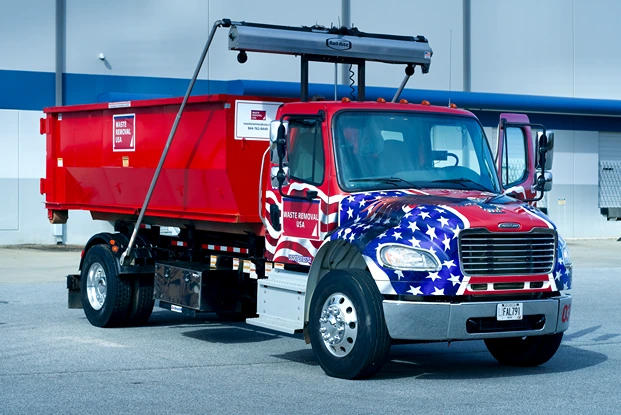
Image Credit: Rebekah Pruett Photography
Choosing the right construction dumpster with fast delivery to your job site near The Lucas Farm or Moores Creek National Battlefield is easier with our team. With our help, you can even handle all your roll-off needs in Wilmington and Lake Waccamaw. No more waiting—call 910-338-0901 and get the container your site needs.
Home Remodeling Cleanup Made Simple with Dumpster Rentals
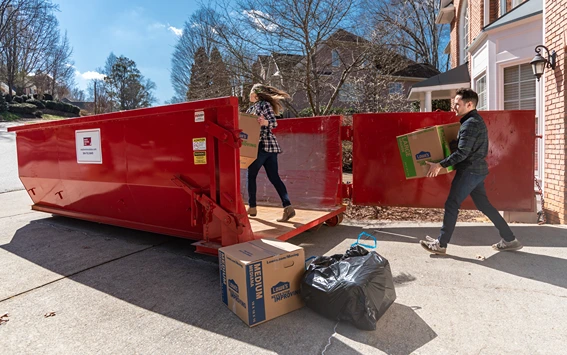
Image Credit: Rebekah Pruett Photography
Waste Removal USA transforms renovation disposal from complicated to effortless. Our strategically timed deliveries ensure containers arrive before debris accumulates, maintaining continuous workflow. We position home dumpsters for maximum loading convenience while respecting property boundaries and landscaping. Customers value our responsive service adjustments when projects evolve beyond initial scope, preventing the workflow disruptions that occur when waste management fails to adapt.
Find the Right Roll-Off Dumpster in Currie for Any Project
Currie residents rely on Waste Removal USA for precisely matched containers that accommodate specific project requirements. Our local team understands Currie’s unique property layouts, ensuring successful placement even with challenging access points. Contact our Currie specialists today at 910-338-0901 to discuss your specific disposal needs, email project details to sales@wasteremovalusa.com for expert container matching, or secure your ideal dumpster through our simple reservation system designed specifically for Currie property improvements.
Dumpster Rental Options at Waste Removal USA
Give us a call and we will set you up with the right dumpster for the job in your local area
Residential
Residential roll off dumpsters are great for household clean outs or clean-ups, yard debris removal and general junk removal.
Construction
Roll off dumpsters for residential & commercial construction debris are perfect for any home renovation job.
Yard Waste
If you are doing yardwork and need a roll off container for yard waste in & around your local area, we have you covered.
Concrete
Order a 10 yard or 20 yard roll off dumpsters for either "clean" concrete or "clean" dirt loads.
Roofing
Just as the name implies, roofing dumpster rentals are used for shingles and sheathing only.
Dumpster Size Comparison
|
Size |
Typical Dumpster Dimensions |
Estimated Capacity* |
|---|---|---|
|
14' long x 8' wide x 3.5' high |
3 pickup truck loads |
|
|
16' long x 8' wide x 4' high |
4.5 pickup truck loads |
|
|
20' long x 8' wide x 4' high |
6 pickup truck loads |
|
|
22' long x 8' wide x 6' high |
9 pickup truck loads |
|
|
22' long x 8' wide x 8' high |
12 pickup truck loads |
Read What Our Customers Are Saying
Currie, NC Dumpster Rental FAQ: What to Know Before You Rent
What's the best dumpster for basement junk and broken furniture?
A 15-yard or 20-yard container provides optimal capacity for standard basement cleanouts involving furniture and accumulated household items. This mid-sized option accommodates bulky furniture pieces while providing sufficient depth for effective stacking of smaller components, maximizing usable volume through strategic loading patterns.
Furniture characteristics significantly impact container requirements, with predominantly wooden pieces creating relatively lightweight loads compared to items containing substantial metal components. Disassembly before loading dramatically improves space utilization, transforming irregularly shaped furniture into flat components that stack efficiently while eliminating void spaces. For basements containing predominantly paper goods, clothing, or lightweight household items, 10-yard containers frequently prove sufficient despite substantial volume due to favorable weight-to-volume ratios compared to construction debris or furniture containing substantial metal components.
How do I coordinate multiple dumpsters for large apartment buildings?
Establish designated staging areas accommodating container requirements while maintaining critical access pathways for residents, emergency services, and collection vehicles. These locations should provide sufficient clearance for delivery and collection operations while minimizing distance from primary waste generation points to reduce labor requirements during material transport.
Implement container rotation schedules aligning with staffing patterns and project phases, maintaining continuous disposal access through coordinated exchanges rather than simultaneous multiple-container approaches creating unnecessary space consumption. This sequential approach maintains disposal capability throughout project duration while minimizing parking impact, particularly valuable in urban environments with limited exterior space.
What precautions should I take when tossing shingles into a dumpster?
Distribute shingle loads evenly across container floors rather than creating concentrated piles, preventing localized structural stress potentially damaging container components during lifting operations. This spreading technique becomes particularly important with containers exceeding half capacity, as weight distribution significantly impacts structural performance during transportation and dumping processes.
Remove foreign materials including nails, flashing, and underlayment when practical, as metal components can create puncture hazards during handling while potentially contaminating recovered materials during recycling operations. Recognize exceptional material density, with standard asphalt shingles weighing approximately 225-275 pounds per square (100 square feet), creating weight-limited rather than volume-limited disposal scenarios in most applications.
Should I rent more than one dumpster for a full kitchen gut?
No, a single 20-yard or 30-yard container typically accommodates complete kitchen renovation debris efficiently while eliminating multiple delivery/pickup charges that significantly impact overall project economics. Sequential loading techniques maximize effective capacity, with dense materials (cabinets, countertops, appliances) placed first followed by bulkier light-weight components including packaging and demolition debris.
Material preparation significantly impacts required capacity, with cabinet disassembly reducing volume requirements by approximately 30-40% compared to intact disposal. This preparation creates flat components stacking efficiently while eliminating void spaces inherent in assembled cabinet structures.
Can I include posts with concrete footings in the same bin?
Yes, posts with attached concrete footings create acceptable combined loads for standard construction containers despite differing material characteristics. This mixed material approach eliminates labor-intensive separation requirements while maintaining disposal efficiency through single-stream handling.
Material preparation significantly impacts container performance, with concrete portions exceeding 8-10 inches diameter benefiting from breaking into smaller sections before loading. This size reduction prevents concentrated weight points potentially causing structural issues during transportation while improving spatial efficiency through more favorable stacking characteristics.
Are deck railings and hardware allowed in a deck demo dumpster?
Yes, deck railings and associated hardware components create acceptable mixed loads when combined with structural lumber in standard construction containers. This consolidation approach improves project efficiency through eliminated sorting requirements while preventing disposal fragmentation across multiple waste streams unnecessarily complicating project logistics.
Metal components require no separation from wooden materials during disposal despite different physical characteristics, as modern processing facilities effectively separate these materials during post-collection handling. While technically acceptable for combined disposal, substantial quantities of non-ferrous hardware (stainless steel, aluminum, copper) might justify separate recovery when exceeding 50-75 pounds, potentially generating revenue rather than disposal costs through scrap metal recovery channels particularly when high-value alloys predominate.
Find Location
Preparing for Dumpster Delivery
Our Service Area in Currie
Customer Reviews
Hours
Monday - Friday8:00AM - 6:00PM











